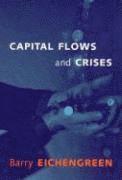
- Format
- Häftad (Paperback / softback)
- Språk
- Engelska
- Antal sidor
- 385
- Utgivningsdatum
- 2004-08-01
- Upplaga
- illustrated ed
- Förlag
- MIT Press
- Illustrationer
- 35 illus.; 35 Illustrations, unspecified
- Dimensioner
- 227 x 150 x 20 mm
- Vikt
- Antal komponenter
- 1
- ISBN
- 9780262550598
- 540 g
Capital Flows and Crises
- Specialorder (osäker tillgång). Skickas från oss inom 11-20 vardagar.
- Fri frakt över 249 kr för privatkunder i Sverige.
Passar bra ihop
De som köpt den här boken har ofta också köpt Slow Productivity av Cal Newport (häftad).
Köp båda 2 för 294 krKundrecensioner
Fler böcker av Barry Eichengreen
-
The Populist Temptation
Barry Eichengreen
-
Hall of Mirrors
Barry Eichengreen
-
Golden Fetters
Barry Eichengreen
-
In Defense of Public Debt
Barry Eichengreen
Recensioner i media
"Recent research in the new comparative economic history is dramatically changing our understanding of the global economy. Only by looking at the evolution of markets, technology, institutions, and policies in a comparative perspective can we fully comprehend the forces behind the most important economic phenomenon of the last 200 years: the great divergence between the economies of the rich core and the poor periphery. In a pathbreaking book that is essential reading for students of world economic history, Jeffrey Williamson presents a new account of the less developed world from 1820 to 1940 and shows how the two revolutions that enriched the core -- industrialization and globalization -- also profoundly shaped the course of events on the periphery."--Alan M. Taylor, Professor of Economics and Chancellor's Fellow, University of California, Davis "Research on crises has exploded in recent years, and Eichengreen has been in the lead. This volume brings together the best of his recent writings on the subject."--Alan M. Taylor, Professor of Economics and Chancellor's Fellow, University of California, Davis
Övrig information
Barry Eichengreen is George C. Pardee and Helen N. Pardee Professor of Economics and Political Science at the University of California, Berkeley. He is the author of Capital Flows and Crises (MIT Press, 2002) and other books.
Du kanske gillar
-
The Culture Map
Erin Meyer
Häftad48 Laws of Power
R Greene
HäftadTransformed
Marty Cagan
InbundenFrågor & svar


